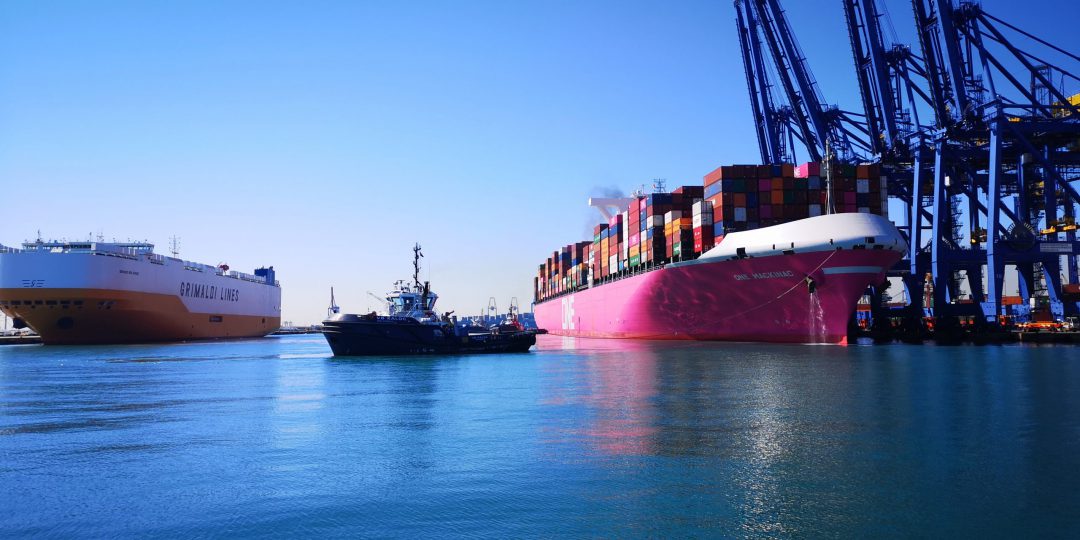Full container traffic dedicated to unloading -import- has grown by 42.29% in the month of September and cargo -export- has grown by 17.22% according to data from the Valencia Port Authority Statistical Bulletin. This trend is also reflected in the year-on-year data for the period October 2020-September 2021, when 1,084,356 export containers have been registered, 17.85% more than in October 2019-September 2020. During this time, import TEUs – or 6.1-metre container equivalent units – amounted to 810,735, 16.18% more than in October 2019-September 2020.
This volume of loading and unloading represents 40% of the total number of import/export containers that entered or left the Spanish port system up to September and confirms Valenciaport as a strategic ally of the business fabric of its area of influence. An upward dynamic that shows the importance of Valenciaport’s services and connectivity, which is also reflected in the accumulated figures for the year. Specifically, between January and September, a total of 813,114 TEUs full of cargo or export have been moved through the docks of Valenciaport, which is 19.92% more than in the same period of 2020, while those for unloading or import have reached 618,719, 18.63% more. With regard to transit and empty containers, the figures are similar to the period January-September 2020.
Thus, total traffic in the first nine months of the year (including liquid bulk, solid bulk, non-containerised goods and containerised goods) has exceeded 63.46 million tonnes, which represents an increase of 8.33% compared to 2020, and the total number of containers has been 4,217,112, 6.65% more than the accumulated figure for the previous year.
In addition, between January and September 2021, ro-ro traffic (a system by which a vessel transports cargo on wheels) reached 9.6 million tonnes, representing an increase of 15.82%. During this period, rail traffic amounted to 2.25 million tonnes, an increase of 18.38%. It should also be noted that in the first nine months of the year, 368,900 cars were handled at the Valenciaport docks, 1.1% more than in 2020.
About passenger traffic, between January and September a total of 438,895 people travelled through the Valenciaport docks, 27.11% more than in 2020. Of these, 382,261 have done so on regular lines (+19.83%) while 56,634 cruise passengers have visited Valencia, more than double that of the previous year after the recovery of this activity in the second half of this year.
Data by merchandise January-September 2021
In these first nine months of the year, containerised general cargo has grown by 5.74% to over 48.18 million tonnes. In this heading, exports of construction materials (+28.28%), vehicles and transport elements (+22.01%), agri-foodstuffs (+20.67%), chemical products (+18.88%) and iron and steel (+12.27%) sectors stand out.
Non-containerised general cargo closed the month with an accumulated traffic of 10.95 million tonnes, 16.91% more than in the same period of the previous year. Liquid bulks closed with 2.34 million tonnes, representing an increase of 15.56% and solid bulks mobilised 1,662,304 tonnes, 19.87% more than in 2020.
Traffic by geographical area
In full container traffic, China continues to be Valenciaport’s main trading partner with 461,201 TEUs in the first nine months of the year and an increase of 20.63%, followed by the United States with 404,321 containers and an increase of 5.04%, and Turkey with 236,153 TEUs, up 4.35%. The most dynamic countries in terms of growth were Morocco with a 39.19% increase, Italy with 38.62% and Pakistan with 27.13%.
Regarding freight traffic by geographical areas, the Mediterranean and the Black Sea have moved more than 18 million tonnes, representing an increase of 10.39%, followed by Spain with 7.58 tonnes and 8.57% more and the Far East with an increase of 8.24% and 7.32 tonnes of goods handled from the docks of Valenciaport.

























